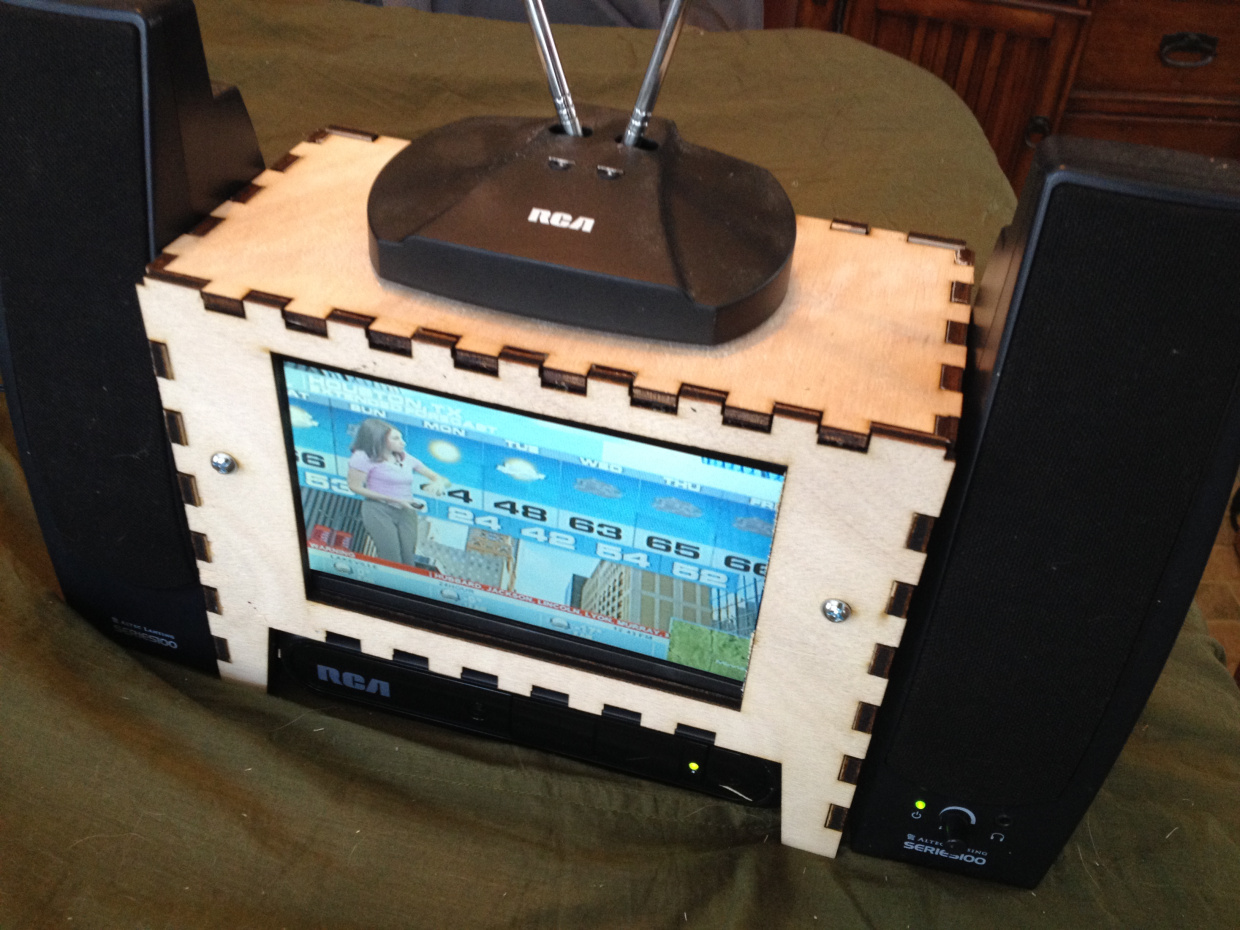
In this project I’m going to show you how to make a DIY television with the ability to display broadcast TV programs. It will also play movies with the help of a Raspberry Pi microcontroller serving as media center!
But first, a handy parts list:
Parts List
- TV with dual AV inputs. I used a 7″ NTSC/PAL TFT display from Adafruit, P/N 947.
- Male-Male RCA cable(s) or adapters such as Adafruit P/N 951.
- PC speakers. Any set of powered speakers with a 3.5mm plug will work.
- A digital-analog converter box. I used an RCA DTA809 that I had lying around. It’s one of those boxes they sold when they stopped broadcasting analog TV signals. It works great for our purposes as well.
- An RCA female to 3.5mm female adapter, such as C&E P/N 30S1-01260.
- Any old antenna. I used an el-cheapo RCA antenna, Radio Shack SKU# ANT111.
RasPi Media Center
- A Raspberry Pi with power supply.
- Another RCA M-M cable or adapter.
- A USB mouse.
- A flash drive with media files on it.
- A headphone splitter, dual male and single female, such as Startech UPC# 065030843836.



